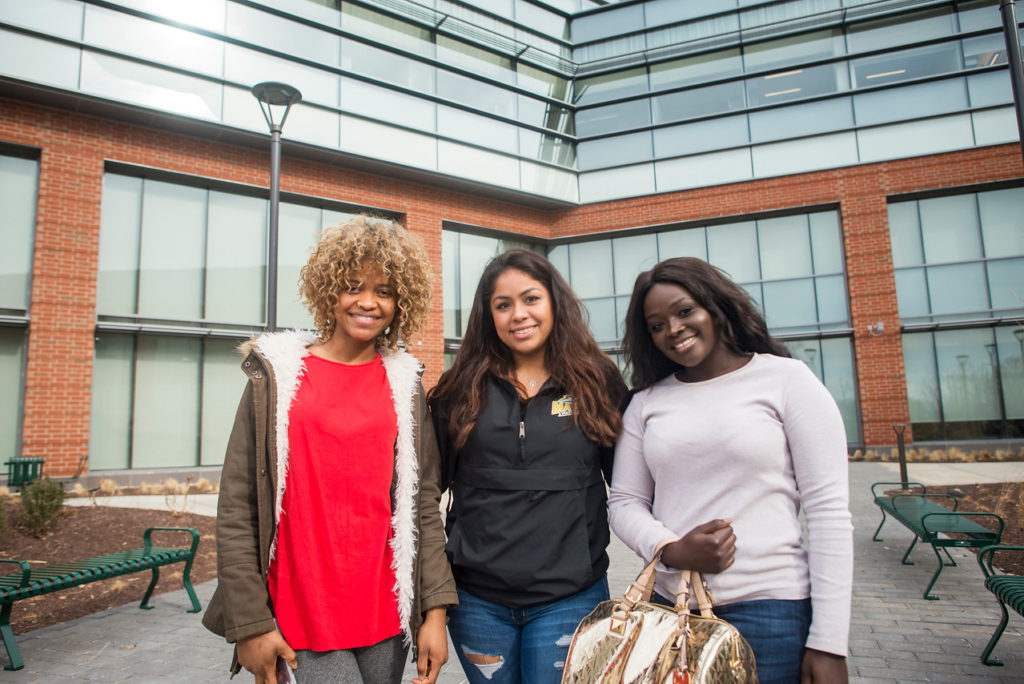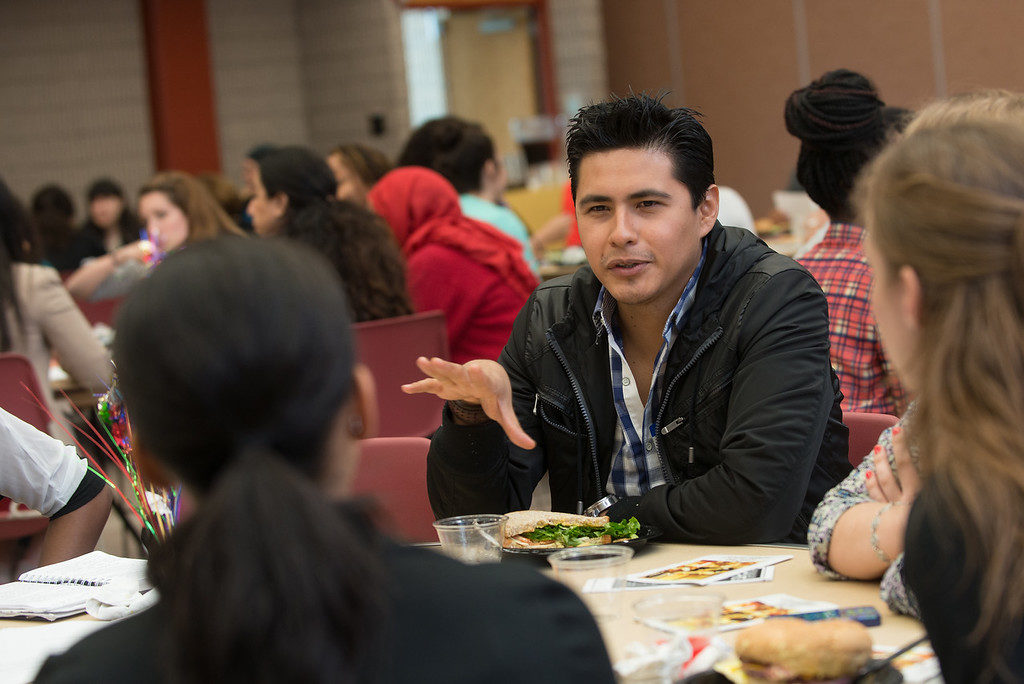Faculty and staff are imperative in creating support networks for contemporary students and their academic success.
Providing contemporary students with a sense of belonging begins before your first conversation, your first class, the first time before they enter your office or attend a program.
Here are some suggestions to support in creating a foundation of accessibility for contemporary students.
Suggested Language for Syllabi and Outreach Materials
Inclusion Statements: Things to ConsiderIncluding an inclusion statement on your syllabus can set the tone for your classroom environment. It shows students that you value and respect difference in intellectual exchange, and are aware of current campus conversations surrounding diversity.
When crafting a contemporary student inclusion statement you might consider the following questions:
- What are your discipline’s conventions and assumptions? How might students with varying backgrounds and experiences respond to them?
- What role does your respect for and engagement with diversity in the classroom play in your personal teaching philosophy?
- What positive learning outcomes can come from respecting difference in the classroom? How can you highlight and utilize these?
- What do you want your students to know about your expectations regarding creating and maintaining a classroom space where differences are respected and valued?
- Is your statement inclusive of different types of diversity, including, but not limited to: race, gender, ethnicity, sexual orientation, age, socioeconomic status, religion, and disability?
- Which campus resources would you like to direct your students to for further support?
- What kind of classroom environment would your students like to see? How might you include them in the conversation about standards for classroom civility?
It is my intent that students from all diverse backgrounds and perspectives be well-served by this course, that students’ learning needs be addressed both in and out of class, and that the diversity that the students bring to this class be viewed as a resource, strength and benefit. It is my intent to present materials and activities that are respectful of diversity: gender identity, sexuality, disability, age, socioeconomic status, ethnicity, race, nationality, religion, and culture. Your suggestions are encouraged and appreciated. Please let me know ways to improve the effectiveness of the course for you personally, or for other students or student groups.
Important note: Given the sensitive and challenging nature of the material discussed in class, it is imperative that there be an atmosphere of trust and safety in the classroom. I will attempt to foster an environment in which each class member is able to hear and respect each other. It is critical that each class member show respect for all worldviews expressed in class. It is expected that some of the material in this course may evoke strong emotions, please be respectful of others’ emotions and be mindful of your own. Please let me know if something said or done in the classroom, by either myself or other students, is particularly troubling or causes discomfort or offense. While our intention may not be to cause discomfort or offense, the impact of what happens throughout the course is not to be ignored and is something that I consider to be very important and deserving of attention. If and when this occurs, there are several ways to alleviate some of the discomfort or hurt you may experience:
- Discuss the situation privately with me. I am always open to listening to students’ experiences, and want to work with students to find acceptable ways to process and address the issue.
- Discuss the situation with the class. Chances are there is at least one other student in the class who had a similar response to the material. Discussion enhances the ability for all class participants to have a fuller understanding of context and impact of course material and class discussions.
- Notify me of the issue through another source such as your academic advisor, a trusted faculty member, or a peer. If for any reason you do not feel comfortable discussing the issue directly with me, I encourage you to seek out another, more comfortable avenue to address the issue.
Lynn Hernandez, Behavioral and Social Sciences, School of Public Health, Brown University
Access for All Statement
I explicitly reject white supremacy and racism and am committed to equity, justice, and democracy in society, on campus, and within my classrooms. No matter the name or label, anti-Black and anti-Semetic, and racist thought and action are antithetical to my mission and values as an educator. I condemn the divisive and intimidating tactics of white supremacist views.
I recognize that systemic racism is pervasive within our society and institutions, and pledge to combat it through receiving critical feedback on how I can be more inclusive and being more self-aware of my privileged identities. Including the use of collective teaching, programming, scholarship, and service. I want you, Mason’s students, to know that I am committed to fostering a classroom where everyone can learn without the chilling effects of bigoted views.
I am determined to uphold the University’s mission, which states that, “We hold ourselves to the highest ethical standards as educators, scholars, and professionals,” and thus I am committed to creating a culture of excellence, inclusion, and accessibility.
I welcome all members of our extended community regardless of their race, ethnicity, immigration status, religion, sexual identity, gender identity, socioeconomic status, political or institutional affiliation, and ability, and am fully dedicated to promoting a diversity of voices and views as an academic department.
I recognize that there is still much self- and systemic-work to be done to make the spaces of the University safe and hospitable to all and am committed to continuing to do that work. My door is open to any students seeking support or guidance.
Land Acknowledgements
A land acknowledgment is a “formal statement that recognizes the unique and enduring relationship that exists between Indigenous Peoples and their traditional territories” (http://www.lspirg.org/knowtheland/). As such, it the first step to a reflection process that will help you be more intentional as you move through spaces. You are welcome to continue to learn about and build relationships with the communities and the land you are occupying in an effort to continually support and work with those communities.
You would acknowledge the land at George Mason University using the following statement:
“I acknowledge that we are on the traditional homelands of the Manahoac and Anacostan peoples.”
If you are not at George Mason University you may use the website https://native-land.ca/ to identify which traditional homelands you are occupying. As part of the reflection process, feel free to reach out to local Indigenous communities to understand their perspective and how to correctly pronounce their names.
Students Who Are Parenting
Our institution values diversity and inclusion, and this includes supporting students who also have parenting and family caregiver responsibilities. Parents and primary caregivers often have additional complications that sometimes make it difficult to attend class, such as morning sickness or late school openings, childcare emergencies, etc. If one of these situations will make it impossible for you to attend class, please let your instructor know about the situation and provide documentation as soon as possible, and these situations will be treated as documented excused absences. If you have a childcare emergency and you think you and your child can manage it, you may bring your child to class; please sit near the door so you can easily step outside if your child needs special attention and is disrupting learning for other students, and return once your child’s needs have been met. Students who are pregnant or parenting should consult this university resource for guidance: https://contemporary.gmu.edu/parenting-and-expecting-students/
Mason’s Stearns Center for Teaching and Learning also provides many useful resources including webinars and one on one support: Creating Inclusive Classrooms
Resources on Supporting Changing Student Populations
The landscape of higher education is changing quickly and this includes our student communities. Adult learners, student parents, transfer students, and online learners are quickly becoming the new normal.







